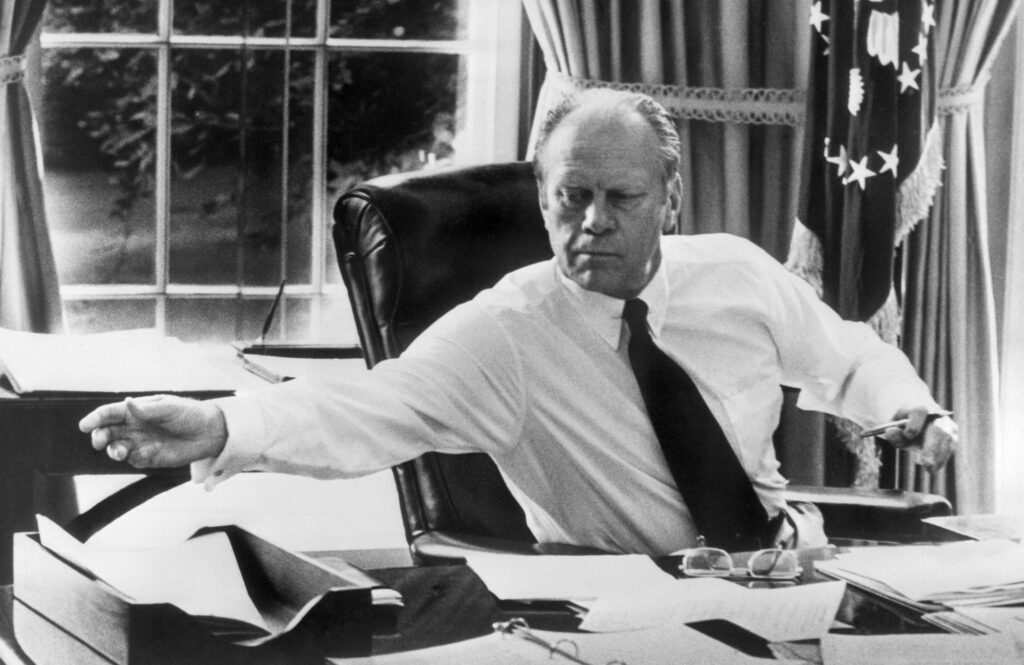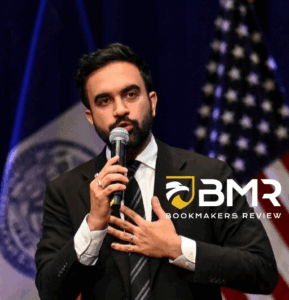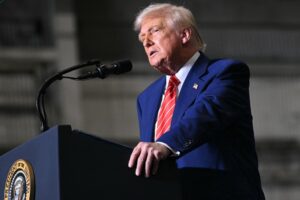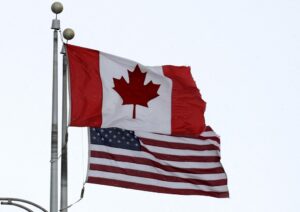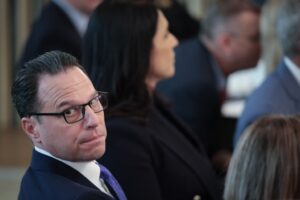How Often Do Betting Odds or Polls Accurately Predict the Presidential Election?
-
 Scott Kacsmar
Scott Kacsmar
- June 24, 2025
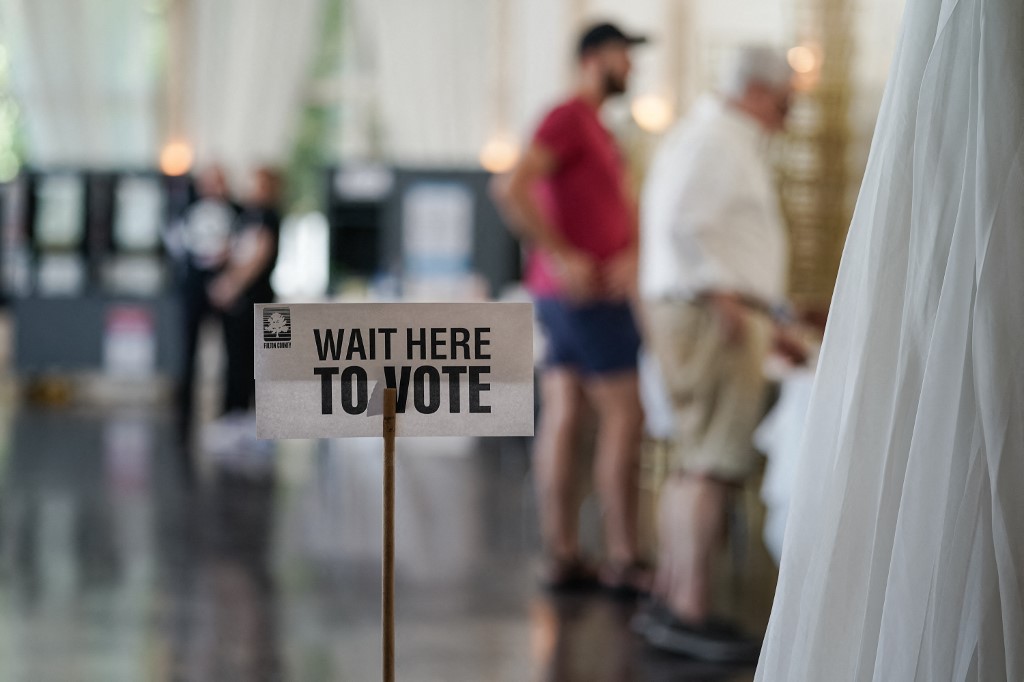
U.S. politics have increasingly been covered like sporting events, and it’s no surprise that political betting has become popular with offshore sportsbooks. We also have a heightened focus on polling data, thanks to websites like FiveThirtyEight.
With so many election betting odds and so much polling data available, can sportsbooks accurately predict presidential elections?
Let’s explore the pros and cons of betting markets and polling data, where these methods differ, and if one is more accurate than the other at predicting U.S. presidential elections.
Betting Markets’ Strong History at Predicting Elections Correctly
Historically speaking, betting favorites have done very well at winning U.S. presidential elections. While those odds can certainly change a lot during the course of the race, the track record for favorites based on final odds is impressive.
| Year | Winner (Party) | Winner Odds | Runner-up (Party) | Runner-up Odds |
|---|---|---|---|---|
| 2024 | Donald Trump (R) | -173 | Kamala Harris (D) | +152 |
| 2020 | Joe Biden (D) | -175 | Donald Trump (R) | +150 |
| 2016 | Donald Trump (R) | +375 | Hillary Clinton (D) | -550 |
| 2012 | Barack Obama (D) | -450 | Mitt Romney (R) | +360 |
| 2008 | Barack Obama (D) | -900 | John McCain (R) | +800 |
| 2004 | George W. Bush (R) | -188 | John Kerry (D) | +138 |
| 2000 | George W. Bush (R) | -175 | Al Gore (D) | +125 |
| 1996 | Bill Clinton (D) | -1000 | Bob Dole (R) | +600 |
| 1992 | Bill Clinton (D) | -800 | George H. W. Bush (R) | +500 |
| 1988 | George H. W. Bush (R) | -700 | Michael Dukakis (D) | +400 |
Sports Odds History has a collection of betting odds for presidential elections going back to 1872 with results prior to 2012 coming from archived searches at newspapers.com.
In the last 38 U.S. presidential elections since 1872, the betting favorite has won 27 times. Given there were 3 elections where the top candidates were tied in the betting odds (1880, 1952, and 1980), that means in the 35 years when there was a clear favorite, that candidate won 77.1% of the time.
As one would expect, having better odds like -250 instead of a closer favorite with -120 odds does increase the likelihood of winning. In fact, the recent change for 2024 with Donald Trump improving to -175 odds at BetOnline is significant.
Since 1872, favorites for president with odds of -175 or better are 26-2 (.929) in elections.
Trump already pulled off the last major upset in 2016 for the Republicans when he defeated Hillary Clinton, who was -550 to win. Trump had +375 odds as a newcomer to politics that few took seriously. But Clinton, the former First Lady to President Bill Clinton, failed to uphold the Democratic stronghold of Wisconsin, Michigan, and Pennsylvania, which was key in Trump’s upset.
The biggest upset since 1872 still belongs to incumbent Harry Truman in 1948 when he was +1500 in the odds, well behind favorite Thomas Dewey at -1800 odds. But Truman won the electoral college vote 303 to 228.
It remains an iconic upset as the front page of the Chicago Daily Tribune ran the erroneous headline “Dewey Defeats Truman” the day after Truman won. There is a famous photograph of Truman holding up the paper’s false headline at St. Louis Union Station.
In fact, of the 8 upset elections in that time, half of them took place by 1892. The only upsets since the 20th century are the aforementioned wins by Trump (2016), Truman (1948), and then a couple of much closer races.
In 1916, incumbent Democrat Woodrow Wilson narrowly won against Republican Charles Evans Hughes by a 277-254 margin in the electoral vote. Wilson was a +110 underdog to the favored Hughes, who had -110 odds.
Wilson’s path to victory was not easy. He became the 1st president to win despite losing both New York and Pennsylvania, something that Truman and George W. Bush would later do.
In 1976, incumbent Gerald Ford was a slight favorite with -120 odds over Democratic challenger Jimmy Carter, who was +100. But Ford was never elected to office. He took over for Richard Nixon following his resignation for Watergate. Carter was unusually popular in the South for a Democrat, which was key to his slight upset win.
Both betting odds and polling had this as a tight race with the final Gallup poll giving Ford an edge of 47% to 46%. Carter ended up winning 50.1% of the popular vote and 297-240 in the electoral vote.
The only time since 1872 that back-to-back elections were won by the underdog was in 1884-92 when 3 straight elections were won by the underdog. Those were the Grover Cleveland elections, which Trump could try to emulate with a record of win, loss, win:
• In 1884, Grover Cleveland won as a +150 underdog over favorite James Blaine (-150).
• In 1888, Cleveland lost as the incumbent favorite with -105 odds in what was viewed as a tight race with upset winner Benjamin Harrison (+105).
• In 1892, Cleveland returned to the White House after winning as an underdog with +125 odds against the incumbent Harrison (-125).
Trump is following a similar path, winning as the +375 underdog against Clinton in 2016, then losing as an underdog incumbent (+150) to Biden in 2020. But 2024 could be the 1st time Trump is favored to win a general election, and this time Biden should be the underdog – assuming he is still on the ballot for Democrats in November.
But to this day, Cleveland is still the only U.S. president to serve non-consecutive terms in office. Trump would join him on that list with a win in November.
Best 2024 U.S. Election Betting Sites
These trusted political sportsbooks are your best bet for betting on the next U.S. President.
| SPORTSBOOK | TRUST SCORE | ONLINE SINCE | Expert Review | BONUS | Bet Now |
|---|---|---|---|---|---|
|
9.6
|
2001
|
20% Cash Bonus
|
|||
|
9.6
|
2001
|
55% Cash Bonus
|
|||
|
9.8
|
2001
|
$250 Free Bet
|
|||
|
9.4
|
1985
|
$500 Cash Bonus
|
|||
|
9.9
|
1994
|
$750 Cash Bonus
|
|||
|
9.5
|
1983
|
$500 Cash Bonus
|
Scientific Polls Find Their Place in Elections
While betting odds did a fine job of gauging public sentiment, there was still a need for something more scientific that could be studied, tracked, and repeated in future elections. At the time, the Literary Digest was a popular magazine and precursor to American polling.
Still, it was not very accurate. The Literary Digest predicted that Alfred Landon would defeat Franklin Roosevelt in the 1936 presidential election, which was wrong. This gave an opportunity to George Gallup to modernize and create scientific political polling of the masses in America in the 1930s. He started his company in 1935 to collect data that would gauge public interest in candidates and the most pressing political issues of the time, and he accurately predicted a Roosevelt victory in 1936.
Gallup’s Legacy
That was the beginning of the Gallup Poll and polling at a nationwide level. From 1936 to 2008, the Gallup Poll was accurate in every presidential election except for 1948 and 1976. In 1948, pretty much every method missed the upset of Harry S. Truman defeating Thomas Dewey. In fact, the Chicago Daily Tribune infamously published the “Dewey Defeats Truman” headline when that was not the case in an upset win.
As for 1976, the Gallup Poll had Gerald Ford edging out a close win over Democrat candidate Jimmy Carter, who won the election that year. Otherwise, Gallup was good for the better part of 70 years.
Accuracy Dilemma
Polls can be very useful to campaigns to judge where they are weak or strong in states. They can also tell where they may need to campaign more. Not to mention how voters may change their preferences over time as the election gets closer. They also can drive up voter interest to make sure these people polled show up to vote in November.
However, polls can run into many accuracy issues. They can be oversampling certain demographics, not interviewing enough minority groups, and outdated methods of contacting people. For instance, many people have moved away from a home phone number to only using a cellphone number, or maybe they don’t answer phone calls at all and prefer to do all of their communication via text and online sites.
There’s also the unpredictability of modern voters. People with no social media footprint and never taken part in any polling could always come out in large numbers to vote in November. Voters who are registered as independents can always be wild cards for pollsters as they could easily vote for either party or even a 3rd party.
The truth is people also lie to pollsters. Purposely misleading someone in an era where tribalism is on constant display is even more likely today than in past decades.
2012 Election: Betting vs. Polls
The 2012 presidential election was between Democratic incumbent Barack Obama and Republican Mitt Romney. The betting markets favored Obama.
In fact, British-based betting firm Spreadex offered an Electoral College spread of 296-300 for Obama to 239-243 for Romney. The result ended up being much more decisive, as Obama won 332 electoral votes to 206 for Romney, who lost all but 1 battleground state.
Bettors becoming voters can be a good thing, but where betting money can become a problem is market manipulation.
In the 2012 election, someone referred to as a “whale” in betting circles wagered anywhere from $4 million to $7 million on Romney to defeat Obama, which obviously did not happen. Obama won his reelection bid in one of the least dramatic elections of the 21st century. Some experts estimated that lone bettor accounted for a third of the money bet on Romney at that site.
In 2012, Gallup’s final survey had Romney at 49% and Obama at 48%, so it predicted a Romney win, which was false. Nate Silver found that Gallup was the least accurate of the 23 polling firms he analyzed in his work for FiveThirtyEight. Silver became popular in political circles after his model correctly predicted 49 of 50 states for the 2008 presidential election.
Obama actually trailed after the 1st debate, then the polls had it as a tie in October. RealClear Politics had the final numbers at 48.8% for Obama and 48.1% for Romney. It ended up being 51.01% for Obama and 47.15% for Romney.
We would give the edge to betting markets on this one.
2016 Election: Betting vs. Polls
We should start by saying that 2016 is one of the biggest upsets in U.S. election history, so most methods, experts, and pundits getting that one wrong is not a surprise. Donald Trump, who was a 200-to-1 underdog early in the process, essentially beat the favored Hillary Clinton by a margin of tens of thousands of votes from 3 battleground states in Michigan, Wisconsin, and Pennsylvania.
Most polling services had Trump losing by a fair margin to Clinton. The LA Times/USC were one of the only polls that had a Trump victory, which was a poll that was criticized for months leading up to the election.
Nate Silver’s model also gave Trump a 28.6% chance of winning in 2016, which was still better than most of the other pollsters that year when Trump did indeed pull off the upset win. Silver also defended the LA Times for publishing their polling data instead of placing too much confidence in the masses saying Trump was going to lose.
When Polls Crumbled
Polling results were closer for the popular vote breakdown, which Clinton won. The final polling numbers had Clinton at 46% and Trump at 42%. The actual numbers were 48.18% for Clinton and Trump at 46.09%. However, Trump’s electoral college victory was a surprise to most, including many bettors even though the markets were a bit more bullish on Trump’s chances in 2016.
Again, reacting to the news on the fly is a built-in advantage for betting odds over polls for presidential elections. With 2 weeks left leading up to the election, Clinton had -550 odds to +375 for Trump according to Odds Shark.
But after the FBI announced an investigation into Hillary’s emails, her odds fell to -300 while Trump improved to +200. That was about a 10-point swing in percentage points for Trump to win, going from 23.5% to 33%. But on election night, things quickly turned for the oddsmakers to favor Trump even if people were still heavily on Clinton to win. Just before 8:00 p.m. on election night, Clinton had -700 live odds to win. Barely 2 hours later, she was +145, and just before midnight, Clinton was a +1000 underdog as Trump was the heavy favorite at -2000.
The 2016 election was such an upset that some thought polling should be done away with, but Silver defended it as most of the state-level polls were still close to the actual outcomes. It was just Trump pulling off that sweep of Pennsylvania, Wisconsin, and Michigan by tiny margins that gave him the electoral win.
It will always go down as one of the biggest upsets in election history.
2020 Election: Betting vs. Polls
In the 2020 election, Joe Biden was a modest favorite over incumbent Donald Trump. This was always going to be a unique election as mail-in ballots took more prominence than ever before due to COVID-19.
In fact, the counting of votes allowed for some incredible value in live betting, as Trump had taken an early lead on Tuesday night before the mail-in ballots largely were counted overnight and for several days that week, allowing Biden to catch up and ultimately win. There were many hours where Biden was a +600 live underdog at sportsbooks as Republicans struggled to understand why the mail-in ballots, which were largely Democratic votes, boosted Biden so much.
Biden was ultimately able to turn Wisconsin, Pennsylvania, and Michigan blue again to secure his win in the popular vote and electoral college.
The final polling numbers had Biden at 51% and Trump at 44%. The actual result was very close, as it was Biden at 51.31% and Trump at 46.86%. Trump thought polls would underestimate him again but that was not the case.
RealClear Politics had a final average in betting odds of Biden at 63.8% and Trump at 35.4%, which meant about -177 odds for Biden. So, it was not as close as we were expecting 2024 to be between these candidates. But according to Forbes, over 70% of money bets were on Trump, the loser in 2020.
Which Is More Accurate at Predicting the Election?
While no method is 100% at predicting U.S. presidential elections, both betting markets and polls can be strong predictors and should be viewed together to fully gauge the prospects of an election.
Over time, betting markets arguably have the better track record as they performed great before polling became big in the 1930s, and they have done a solid job since. Both can run into accuracy issues with manipulative bettors and untruthful responders. Also, the markets have largely aligned with what the polling data has been saying for decades, so it’s harder today to see a large disagreement between the methods.
Still, betting odds do have an edge in being able to update for real-time events while polls, which take time to compile, can be outdated by the time they are released. Given their ages, if Biden or Trump were to have a stroke tomorrow, that is something you’d look for to have an instant impact on the betting odds while polling would be slow to capture that new information.
The added benefit of people putting their money where their mouth is with bets can also make it easier to trust the betting prices more than the polls. Remember, those people are likely going to vote in November.
